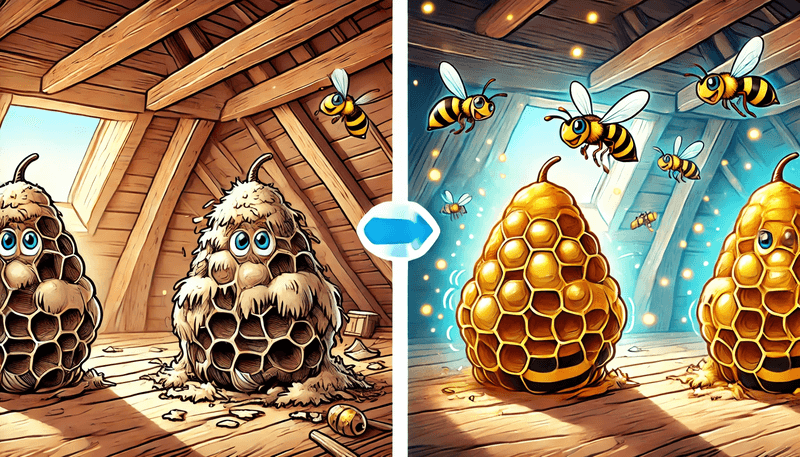
Are Your Old Wasp Nests a Hidden Danger? Find Out Now!
As summer rolls around and outdoor activities become more frequent, the sight of old wasp nests may raise concerns for homeowners. Questions such as "Are these nests a danger to my family and pets?" and "Should I take action?" often arise. Understanding wasp behaviour is key to answering these concerns. So, let's delve into the truth about old wasp nests and determine whether they are indeed a hidden danger.
Wasp Nest Behavior: The Basics
To understand the risks associated with old wasp nests, it's essential to first explore wasp behaviour. Contrary to popular belief, wasps do not return to old nests. This fact might come as a surprise to many. Still, homeowners must recognize this behaviour when evaluating potential threats.
New Beginnings Every Year
Every spring, wasp queens emerge from hibernation and set out to establish new colonies. They search for suitable locations, often choosing sheltered areas such as eaves, attics, or hidden spots in gardens to construct their nests. These nests are crafted from a papery substance made from chewed wood fibres mixed with saliva. Once a queen finds an appropriate spot, she will build a new nest to raise her brood.
Do Wasps Reuse Old Nests?
While wasps do not return to old nests, some nuances are worth mentioning. Occasionally, a new queen may build her nest alongside an old one, but this occurrence is quite rare. In such cases, the old nest serves more as a landmark rather than a functional structure. The new colony will typically establish its nest nearby rather than reuse the old nest.
The Entry Point Mystery
In some situations, wasps may use the same entry point on a building as a previous nest did. This behaviour can lead to confusion and concern, as it might appear that they are returning to an old nest. However, they do not inhabit the old structure; they take advantage of an existing entry point. Understanding this distinction is vital for addressing concerns regarding old nests.
What to Do About Old Wasp Nests
If you discover old wasp nests on your property, it's essential to assess the situation carefully. Here are some steps you can take:
1. Observe and Assess
Before taking any action, observe the nests from a safe distance. If you notice signs of activity, such as wasps flying in and out of the nest, this could indicate that the nest is, in fact, not old but a new, active one.
2. Consider Removal
If you determine that the old nest poses a potential risk, consider removing it. However, caution is paramount:
- If it is determined that the nest is old and unused, you can remove the nest by simply pulling it down into a bin bag. The nest will come off very easily and crumble. It is best practice to try and get a bin bag around as much of the nest as possible before trying to pull the nest away from where it is attached.
- Hire Professionals: If the nest is live, it's best to contact a pest control professional. They have the expertise and tools to safely treat nests.
3. Prevent Future Nests
Taking preventive measures can help keep your property free from new wasp colonies:
- Seal Entry Points: Inspect your home for any cracks or gaps where wasps might enter. Sealing these openings can significantly reduce the likelihood of new nests being established.
- Maintain Cleanliness: Keeping outdoor dining areas clean and free of food debris can deter wasps, as they are attracted to sugary substances and protein-rich foods.
While old wasp nests may seem concerning, they are typically not dangerous. By understanding wasp behaviour and taking proactive measures, you can protect your home and enjoy your outdoor spaces without worry.
If you ever feel uncertain or unsafe about handling wasps, it's always best to consult a professional pest control service. Stay safe and enjoy your summer without the fear of wasps buzzing around!
